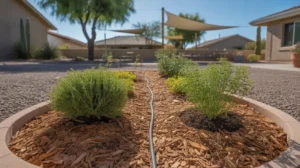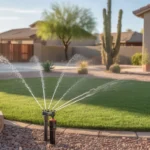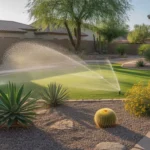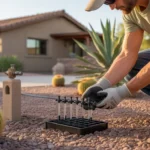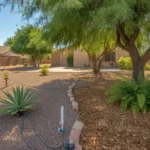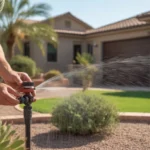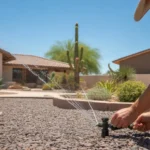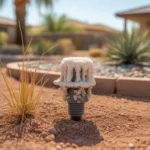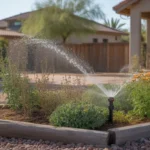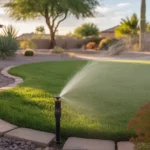As the summer heat bears down on the Southeast Valley, keeping your soil adequately moist becomes a critical challenge. With some smart watering routines and moisture retention techniques, you can ensure your plants thrive even on the most scorching days. Let’s explore how to quench your soil’s thirst efficiently this season.
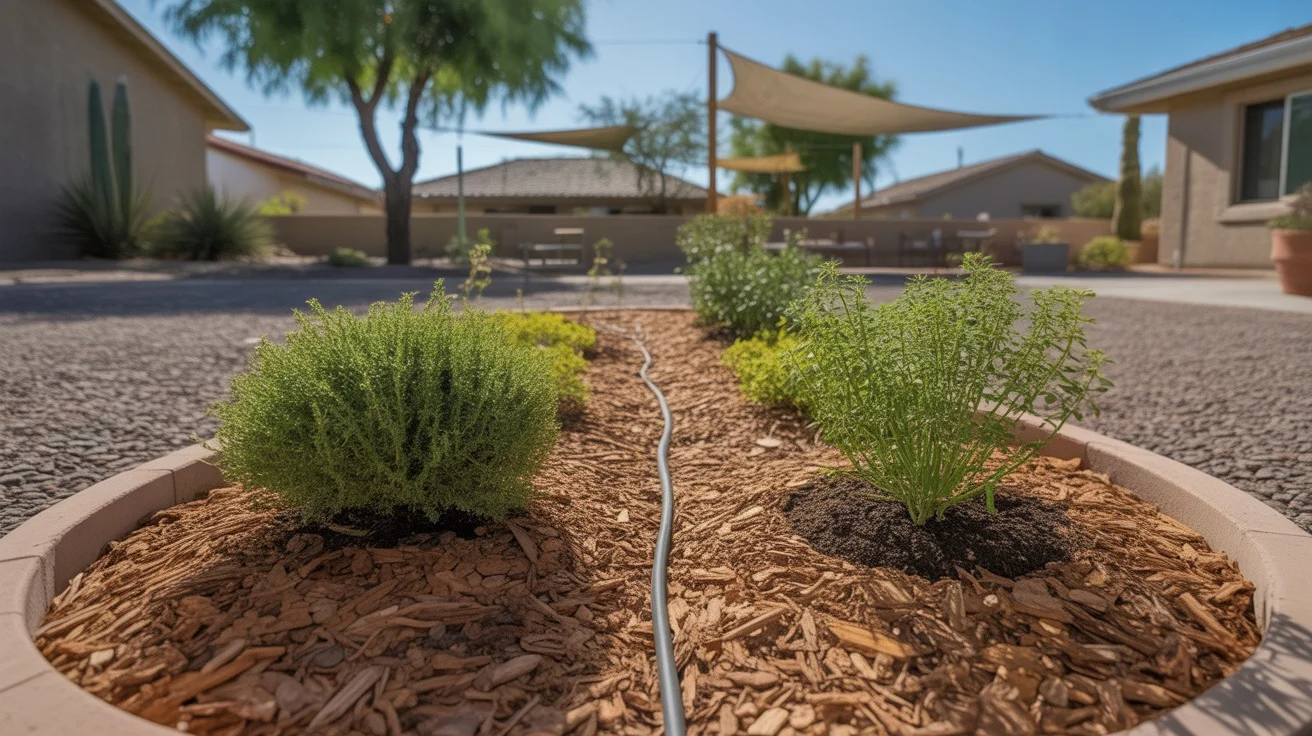
Start With a Solid Foundation: Improve Your Soil
The first step to retaining moisture is building healthy soil. Southeast Valley soils tend to be heavy in clay, which can lead to poor drainage and compaction. Amending your soil with organic matter like compost, aged manure, or peat moss can drastically improve its structure and water-holding capacity.
Aim to work in several inches of organic matter each spring or fall. Over time, this will create a rich, loamy soil that holds moisture like a sponge while still allowing excess water to drain. Your plants’ roots will grow deeper and stronger in this improved environment.
If you’re establishing new beds or planting trees, consider having your soil tested by a local extension office. They can provide specific amendment recommendations tailored to your soil type and plant selections. Investing in your soil is one of the most impactful things you can do for long-term plant health and water efficiency.
Mulch Like It’s Your Job
Mulching is a gardener’s secret weapon against moisture loss. A thick layer of organic mulch, like wood chips, shredded leaves, or straw, acts as insulation for your soil. It shades the surface, reducing evaporation from sun and wind exposure. As a bonus, it also suppresses weeds that compete with your plants for water and nutrients.
Aim for a mulch layer about 3-4 inches deep, pulled back slightly from plant stems and tree trunks to prevent rot. Replenish the mulch as needed throughout the season as it breaks down. Not only will you retain more moisture, but you’ll also improve your soil over time as the mulch decomposes.
For a desert-friendly option, consider inorganic mulches like gravel or crushed rock. These materials are excellent at reducing evaporation while allowing water to percolate through to the soil. They also lend a clean, modern aesthetic that complements many Southeast Valley landscapes.
Timing is Everything: Water Wisely
How and when you water makes a huge difference in moisture retention. Aim to water deeply and infrequently, allowing the water to penetrate 6-8 inches into the soil. This encourages deeper root growth, which in turn makes plants more drought-resistant. Shallow, frequent watering leads to weak, surface-level roots that quickly dry out.
The best time to water is early morning, between 4am-8am. Temperatures are cooler and winds are calmer, allowing more water to soak in before evaporating. Avoid watering in the heat of the day, when up to 30% of the water can be lost to evaporation.
If you have an irrigation system, audit it regularly for leaks, broken heads, or misdirected sprays. An efficient system should deliver water directly to the root zone without oversaturating or causing runoff. Consider installing a smart controller that adjusts watering based on local weather data.
Harness the Power of Drip Irrigation
Drip irrigation is a game-changer for moisture retention. Unlike sprinklers that spray water into the air, drip systems deliver moisture directly to the soil surface at a plant’s root zone. This minimizes evaporation and ensures that water goes exactly where it’s needed most.
Drip systems range from simple soaker hoses to more complex emitter lines. They can be customized to your plant layout and watering needs. Because the flow rate is much lower than sprinklers, drip allows water to slowly seep into the soil without running off.
When setting up drip, use pressure-compensating emitters to ensure even watering across different elevations or lengths of tubing. Add a filter to keep sediment from clogging the small emitter openings. With some basic maintenance, a drip system can be your most powerful ally in retaining soil moisture.
Group Plants by Water Needs
An often-overlooked moisture retention strategy is hydrozoning – grouping plants together by their water requirements. By placing drought-tolerant plants separately from thirsty species, you can tailor your irrigation to each zone’s specific needs. This helps you avoid overwatering some plants while underwatering others.
Start by making a list of the plants in your landscape and researching their ideal watering frequency. Many native and desert-adapted plants, like cactus, agave, and sage, have very low water needs once established. By contrast, fruit trees, vegetables, and many annuals require consistently moist soil.
As you design or renovate your beds, cluster plants with similar needs together. You can then set up dedicated irrigation zones that deliver the right amount of moisture to each group. This targeted approach conserves water and keeps every plant healthier.
Slow and Steady: Use Basins and Berms
For trees, shrubs, and larger landscape plants, creating basins and berms can significantly aid moisture retention. A basin is a shallow depression dug around a plant, with a raised berm encircling it. This catchment system collects and holds water, allowing it to slowly percolate down to the root zone.
To create a basin, remove several inches of soil in a wide, shallow ring around the plant, leaving a raised lip at the outer edge. The basin should be as wide as the plant’s mature canopy or drip line. Fill the depression with mulch to further slow evaporation.
When watering, fill the basin to the brim and let it soak in deeply. This slow-and-steady approach is much more effective than a quick surface spray. It ensures that the plant’s entire root system gets a deep drink, preparing it to withstand the hot, dry days ahead.
Invest in Shade and Windbreaks
Finally, consider using shade and windbreaks to reduce moisture loss from your soil. Intense sun and hot winds can quickly strip water from the ground, leaving your plants thirsty and stressed. By creating some strategic shade, you can significantly decrease evaporation.
Shade options include trees, large shrubs, shade sails, or even temporary structures like umbrellas or row covers. Placing smaller, sensitive plants on the east or north side of a shading element can make a big difference in their moisture needs.
Windbreaks, like hedges, walls, or fences, can shield your soil from drying winds. By slowing air movement over the ground, they help retain surface moisture. This is especially helpful in the Southeast Valley, where hot, dry winds can be a major factor in moisture loss.
With these moisture retention routines in your toolkit, you can help your soil withstand the intense summer heat of the Southeast Valley. By improving your soil, mulching well, watering wisely, and using strategies like drip irrigation, hydrozoning, basins, and shade, you’ll foster a landscape that is both resilient and water-wise. As you implement these techniques, you’ll be rewarded with healthier plants, more efficient watering, and a thriving, vibrant yard all summer long.

